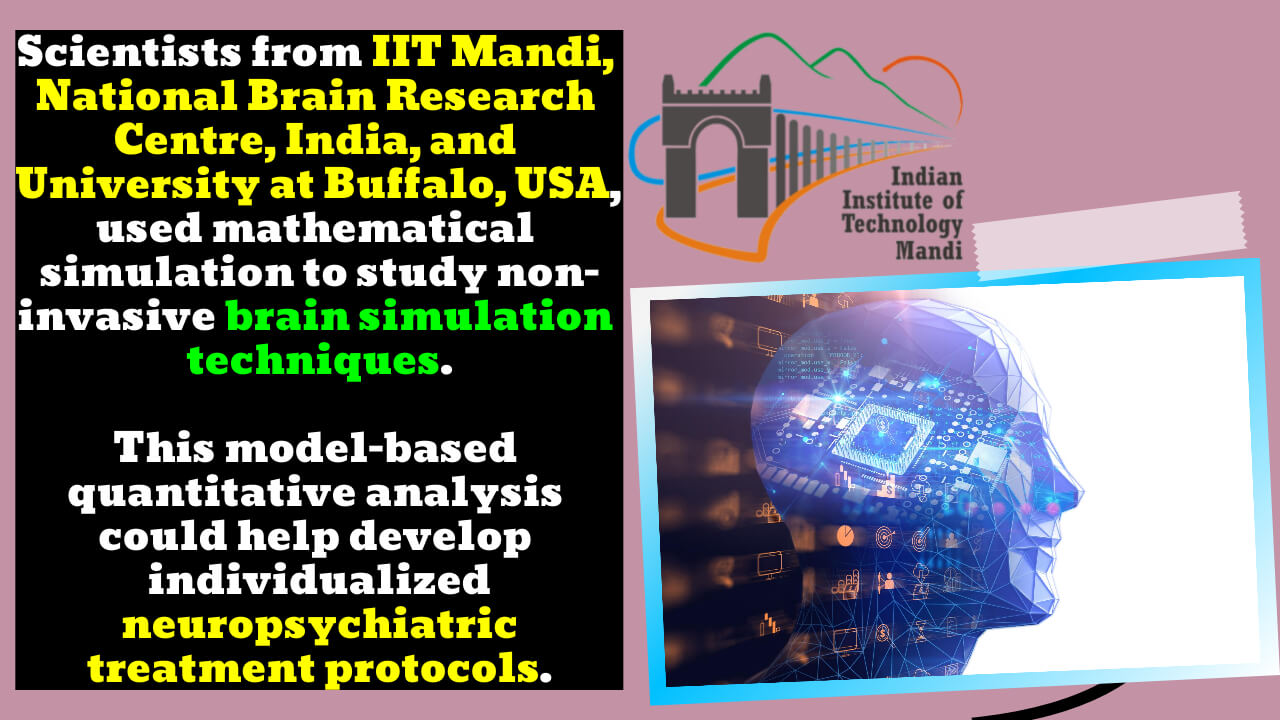Transcranial electrical stimulation (tES) is a way to stimulate the brain that doesn’t hurt. It sends an electric current through parts of the brain to study or change how the brain works. It was also found that the first effects of tES on the blood vessels were also found to happen through the perivascular space.
Key Highlight:
- A research team from IIT Mandi, India’s National Brain Research Centre, and University at Buffalo, USA, used mathematical simulation to study non-invasive brain simulation techniques.
- Three non-invasive brain stimulation techniques – tDCS, tACS, and tOCS – were modelled to assess their physiological effects.
- In addition to the perivascular space, the initial tES effects on blood vessels were found to occur via the cerebral perivascular space.
- We hope our findings will help clinicians treat patients with stroke, traumatic brain injury, mild cognitive impairment, dementia, and other neuropsychiatric disorders.
- This mathematical model-based quantitative analysis would aid in individualized neuropsychiatric treatment protocols.
A team of scientists from the Indian Institute of Technology (IIT) Mandi, the National Brain Research Center, India, and the University at Buffalo, USA, worked together to do mathematical simulation studies on non-invasive brain simulation techniques.
A brain stimulation technique called transcranial electrical stimulation (tES) is non-invasive and passes an electrical current through parts of the brain to study or change how the brain works.
Three types of non-invasive brain stimulation, tDCS, tACS, and tOCS, were modelled to see how they might affect the brain’s physiological systems, such as the heart and the brain’s blood flow. People also found that the first effects of the tES on the blood vessels were also found to happen through the space around the blood vessels in the brain, which is filled with fluid.
Brain and neuro-specialists can use the findings from this study to plan personalized neurorehabilitation activities for people who have had strokes, traumatic brain injuries, mild cognitive impairments, Alzheimer’s disease, and other neuropsychiatric disorders. Such a mathematical model-based quantitative analysis could help people with neuropsychiatric disorders get the best treatment possible. The team will do experiments that will block different pathways to make sure their modeling results are correct.
An international team of scientists led by the Indian Institute of Technology Mandi (@iit__mandi) has performed a mathematical simulation studies on non-invasive brain simulation techniques. pic.twitter.com/ad4GDlJ1Da
— IANS Tweets (@ians_india) December 20, 2021




